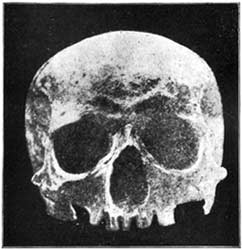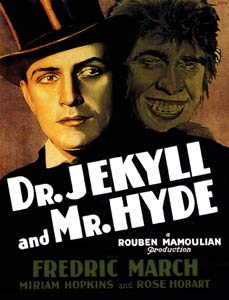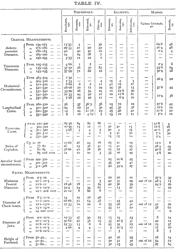Issue 7 : Hound, Chapters 9
And yet the course of
true love does not run quite as smoothly as one would under the circumstances
expect.
A reference to Shakespeare's A Midsummer Night's Dream: "The
course of true love never did run smooth."
…there was thrust out an evil yellow face, a terrible animal
face, all seamed and scored with vile passions.
Like Dr. Mortimer, Watson apparently believes that there is a criminal
"type"—a throwback to a less evolved human being who is closer to
our animal origins.
Late nineteenth-century criminology focused on the vain hope that criminals
could be recognized by certain physical traits. Cesare Lombroso (1835-1909),
Italian scientist, first developed his theory of the "born," or "atavistic,"
criminal in 1872. Lombroso believed that this type of criminal was a throwback
to an earlier stage of evolution—the Neanderthal—both physically
and psychologically, and therefore lacked an ethical sense. The criminal's
face and body were marked by what Lombroso called "stigmata."
Other researchers often had trouble reproducing Lombroso's results, probably
because his methods were slipshod. In The Female Offender Lombroso
complains that no one but he could find 33 "criminal anomalies" in the
dimensions of the skull of Charlotte Corday, murderer of Marat.
 |
|
| Lombroso's
measurements of the skulls of female criminals and prostitutes |
Skull
of Charlotte Corday |
The idea that criminals possess a low forehead and other "primitive" physical characteristics was influenced heavily by phrenology and anthropometry. Such ideas also surfaced in the literature of the time.
"He is not easy to describe. There is something wrong with his appearance, something displeasing, something downright detestable. I never saw a man I so disliked, and yet I scarce know why. He must be deformed somewhere…."
—from a description of Mr. Hyde (The Strange Case of Dr. Jekyll and Mr. Hyde by Robert Louis Stevenson, 1886)
 |
In Stevenson's
story, Mr. Hyde is Dr. Jekyll's atavistic self |
I caught one glimpse of
his short, squat, strongly-built figure as he sprang to his feet and turned
to run. At the same moment by a lucky chance the moon broke through the
clouds. We rushed over the brow of the hill, and there was our man running
with great speed down the other side, springing over the stones in his
way with the activity of a mountain goat.
Selden's atavism has advantages—he is able to outrun his more "civilized"
pursuers.
A lucky long shot of my revolver might have crippled him, but
I had brought it only to defend myself if attacked, and not to shoot an
unarmed man who was running away.
Like Conan Doyle himself, Watson follows a chivalric code of honor, even
when it does not work to his advantage. Watson often brings his "service
revolver" on cases at Homes's request, but he hardly ever fires it.
